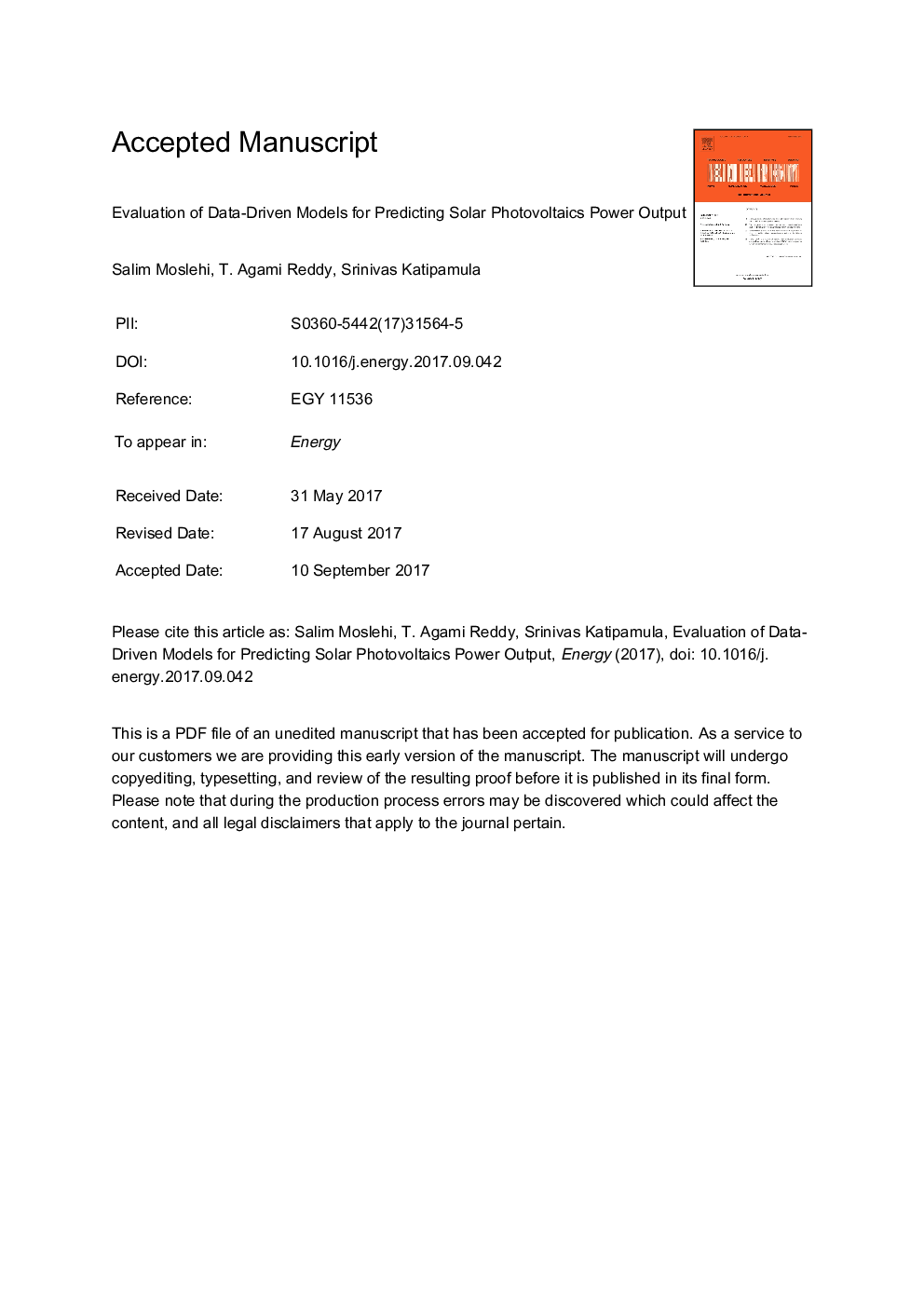| Article ID | Journal | Published Year | Pages | File Type |
|---|---|---|---|---|
| 8072578 | Energy | 2018 | 20 Pages |
Abstract
This research was undertaken to evaluate different inverse models for predicting power output of solar photovoltaic (PV) systems under different practical scenarios. In particular, we have investigated whether PV power output prediction accuracy can be improved if module/cell temperature was measured in addition to climatic variables, and also the extent to which prediction accuracy degrades if solar irradiation is not measured on the plane of array but only on a horizontal surface. We have also investigated the significance of different independent or regressor variables, such as wind velocity and incident angle modifier in predicting PV power output and cell temperature. We found wind velocity and module temperature measurements are too unreliable for use in inverse solar PV models. The inverse regression model forms have been evaluated both in terms of their goodness-of-fit, and their accuracy and robustness in terms of their predictive performance. Given the accuracy of the measurements, expected CV-RMSE of hourly power output prediction over the year varies between 3.2% and 8.6% when only climatic data are used. Depending on what type of measured climatic and PV performance data is available, different scenarios have been identified and the appropriate modeling pathways have been proposed. These models are to be implemented on a controller platform for optimum operational planning of microgrids and integrated energy systems.
Related Topics
Physical Sciences and Engineering
Energy
Energy (General)
Authors
Salim Moslehi, T. Agami Reddy, Srinivas Katipamula,
